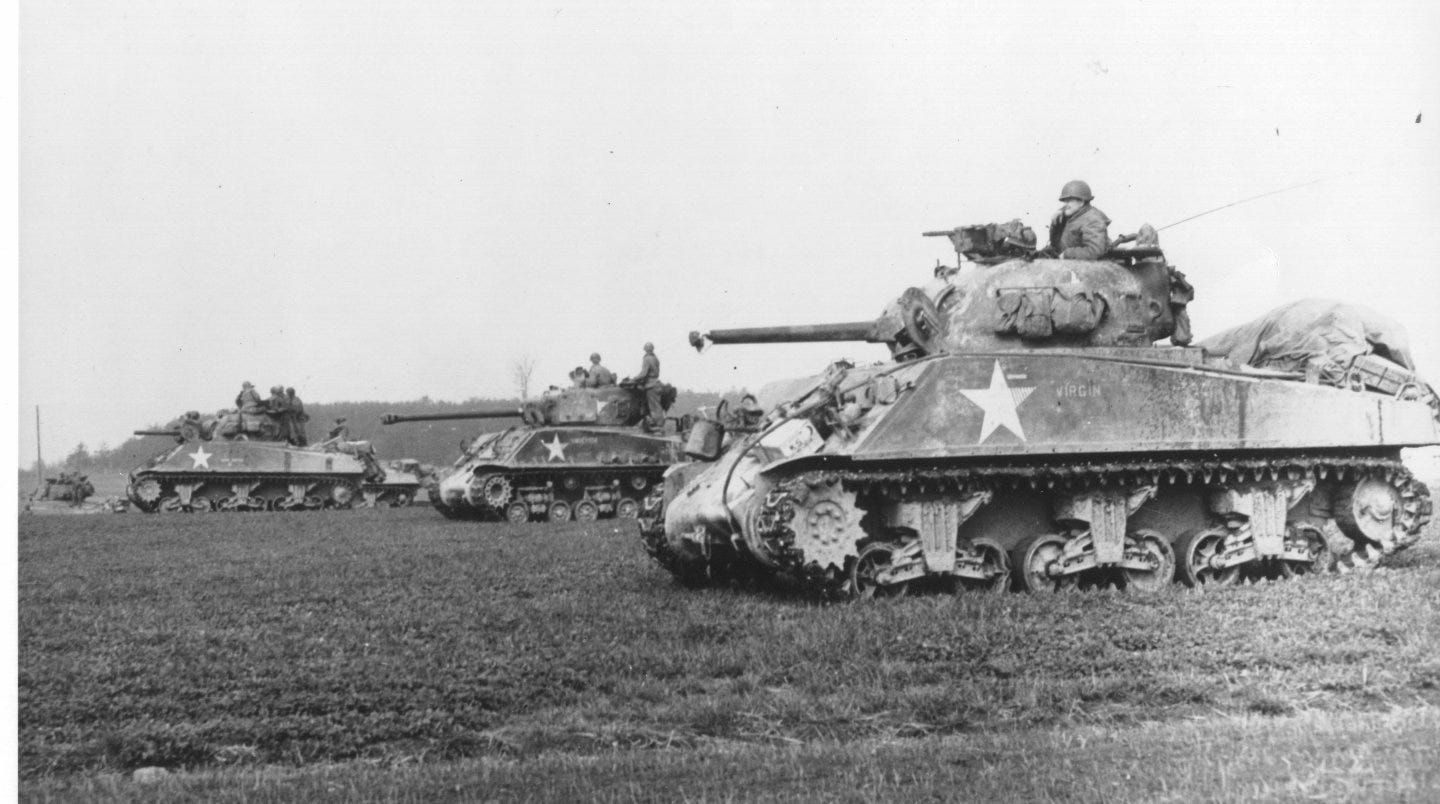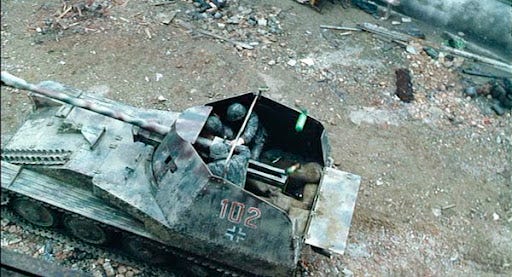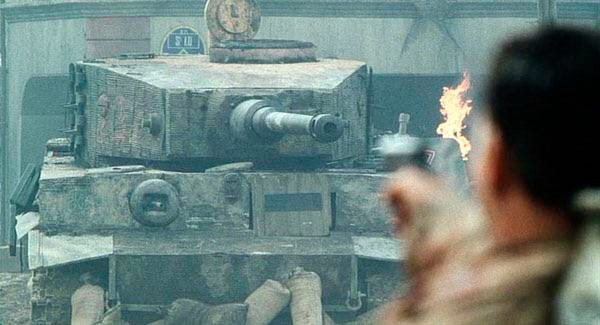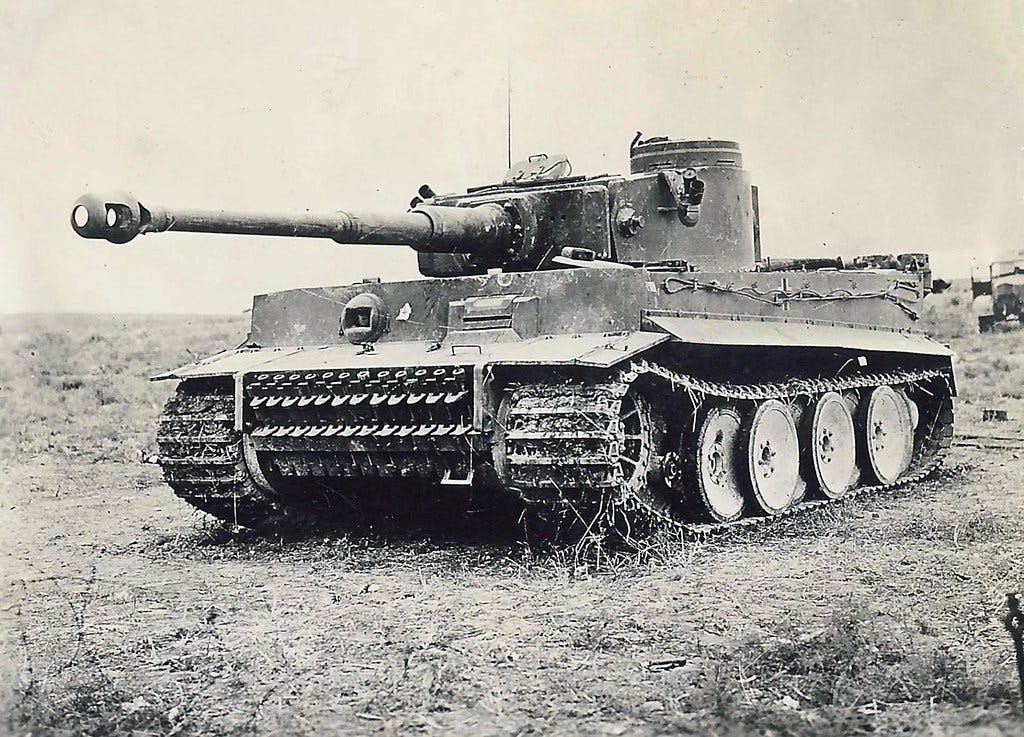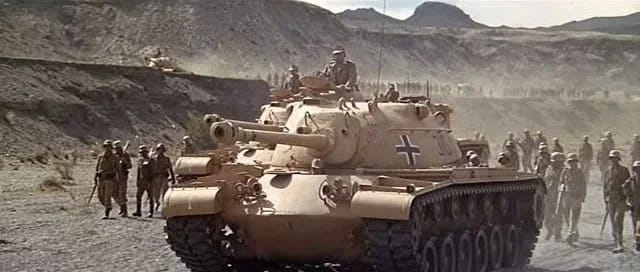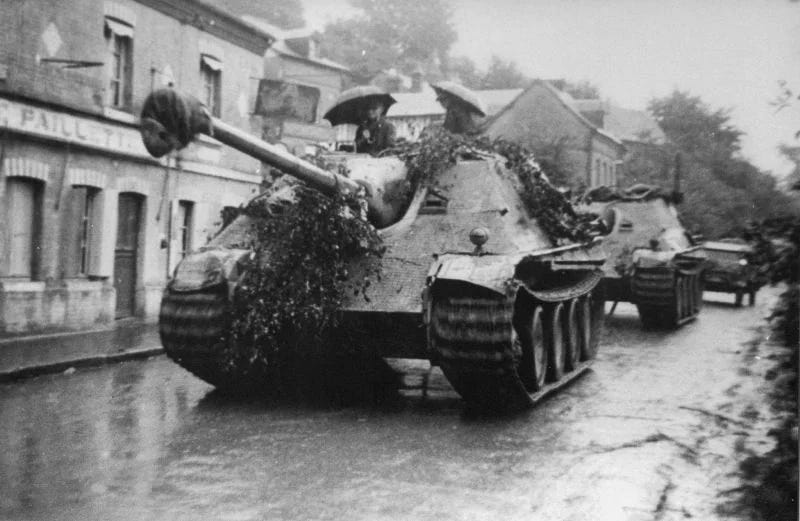We Need To Talk About Movie Tanks
Forget the US election...correct representation of armored vehicles in war movies is the critical issue of our day.
On a recent long-haul flight from Hong Kong1, I decided to while my time binging Band of Brothers. If you’re not familiar, Band of Brothers is a 2001 miniseries by Steven Spielberg and Tom Hanks who, right off the success of Saving Private Ryan, decided we needed more of that. 10 hours more to be exact. Based on the book by noted historian Stephen2 Ambrose3, the miniseries follows a group of paratroopers from D-Day until the end of the war.
I found the miniseries to be “fine.” I have critiques: most of the characters were fairly forgettable (I literally had trouble tracking who was who), and some of the most interesting ones seemed to get ignored or cast aside (Bull and Buck Compton being key examples4.) An episode in which a combat mission is juxtaposed with the commanding officer typing a report about it felt gimmicky, as did the Battle of Bastogne seen through the eyes of a combat medic we rarely notice either before or after5. If I’m being honest, also, the interviews with the veterans before each episode were easily skipped. Don’t get me wrong, I’m glad for their service, and it’s cool they got that opportunity, but forwarding past those, the opening credits, and the adverts the airline threw in saved me 7 minutes each episode (there are 10 total, so that’s not trivial). Spielberg has always had a heavy, sappy hand as director6. Saving Private Ryan was a great war movie, but the maudlin, over-emotional bits with the old dude at the beginning and end nearly spoiled it. BoB can also overdo it at times with the sentimentality.
The best bit about BoB though was…they used actual, appropriate tanks during the battle scenes. Americans are in the ubiquitous M4 Sherman of course, but I was gladdened to see Brits in their Cromwells, and Germans in various StuG, Jadpanther and Tiger armored vehicles. Why is this important? Well, let me explain.
Many war movies assume that viewers are idiots and can’t distinguish American from German tanks. I remember watching Tea with Mussolini in which the German Army shows up at one point driving American Sherman tanks. We can be goofy about this (“How do you know these weren’t captured Shermans, repurposed by the Germans?”) but the reason for the movie misuse of tanks is obvious: there are a fair number of working Shermans available to filmmakers, whereas working German tanks are rare. The filmmakers hoped viewers wouldn’t notice. And, to be sure, most viewers aren’t tank geeks like me, so they were probably right.
The M4 Sherman’s main attributes were that it was reliable, easy to mass-produce, and easy to transport across the Atlantic. These weren’t minor issues to be fair, but in a one-on-one match up between a Sherman and most contemporary German armor, the Sherman was doomed (both BoB and the tank movie Fury accurately present this). But the US produced a lot of Shermans, whereas German tanks were far fewer and, despite hitting harder, often had maintenance problems.
In Saving Private Ryan the final battle scene we are told the US troops are fighting two Tigers and two “panzers” (albeit Tigers were panzers). Granted US grunts were probably imprecise in their language, but the things that show up were not what was advertised. Browsing the internet a bit I saw a lot of speculation that the “Tigers” were dressed up T-34s (a Russian tank from WWII). The other two vehicles (the “panzers”) were open-turret vehicles, possibly Marders.
If so, they did a decent job making that T34 look like a Tiger (I’m assuming the same movie prop tank was used to represent both Tigers in film). Here’s the “Tiger” from Saving Private Ryan:
And here’s a historic photo of one:
That’s not too bad. That can be contrasted with, say, the 1970 movie Patton which basically just threw tanks in willy-nilly to represent both sides. All of Patton’s tanks were American-made, in fact, and some of the tanks used were actually produced after WWII. Patton is a decent film, but what a disappointment for a tank geek like me.
The real joy of BoB was seeing the StuG-III get some love. StuGs were assault guns…essentially tanks without a turret. Initially designed for infantry support, without a turret taking up space they could hold more powerful guns and, given a lower profile, proved harder to hit. They were also more cheaply made and, as such, proved to be excellent tank-killers particularly when used in more defensive, ambusher roles as became more crucial later in the war. StuGs and other assault guns like the Hetzer inflicted massive casualties, particularly on the Russians, late in the war. They never got much love in the movies, people being more obsessed with the far-better known Tiger tank, so it was nice to see them get an appearance.
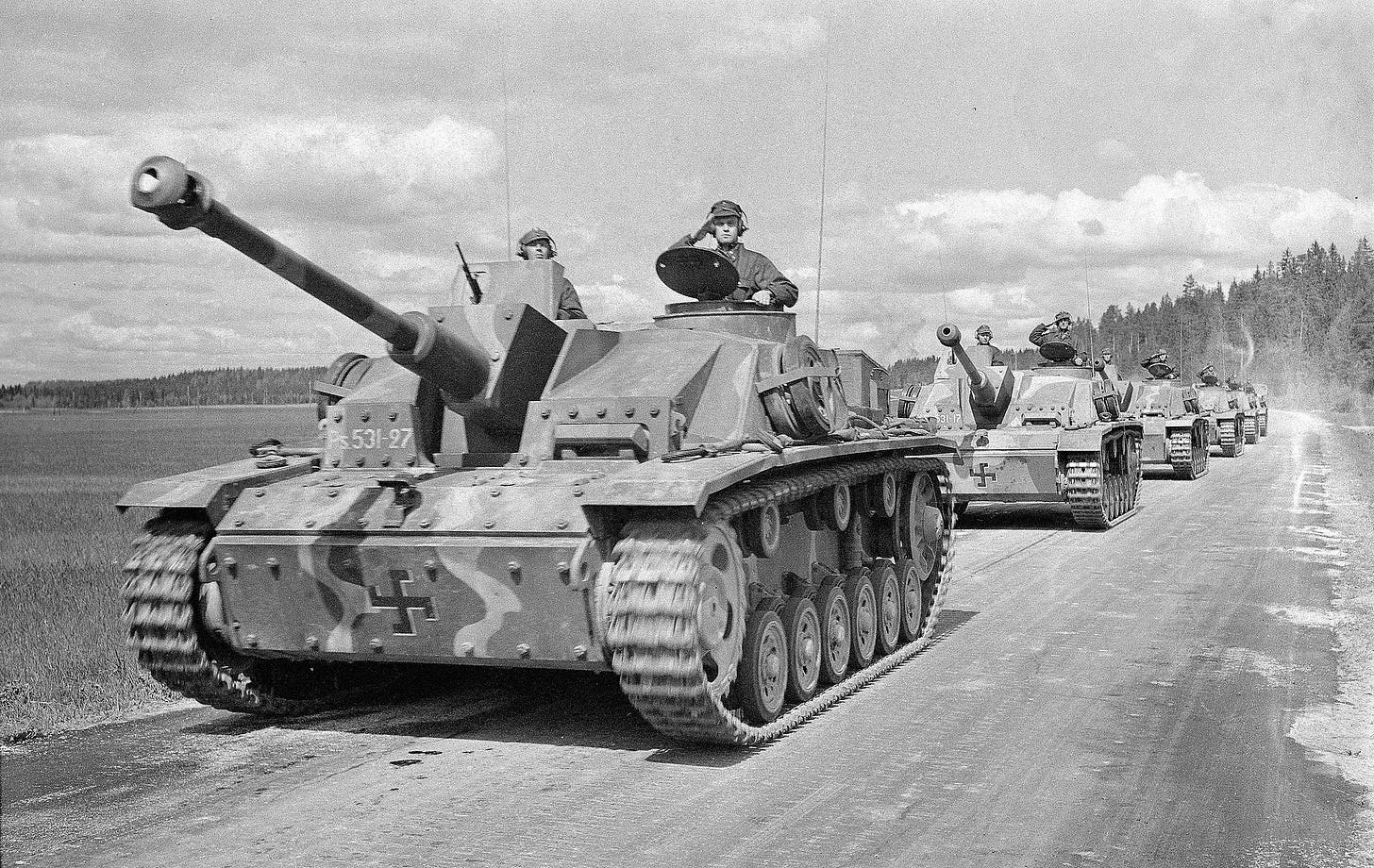
Even neater was seeing the appearance of a Jagdpanther, a fairly rare tank destroyer made from a Panther tank, albeit with a fused upper casement, rather than a turret (as with the StuGs this allowed for use of a more powerful cannon). Not too many of these were made, but they could shred any allied tank, so kudos to the BoB technical team for including one.
Most American movies focus on WWII after the US got involved. By then, the Germans had begun producing some truly excellent tanks. Interestingly, the Germans began WWII with largely rubbish tanks, aside from the Panzer IV (which the Germans never bothered to give a cool name to like the Panther and Tiger tanks). So we don’t tend to see a lot of films with early Panzers7.
Prior to the 1990s most war movies were pretty lazy about using the right tanks. I’m glad to see this recent trend. For those of my readers who may go on to become movie prop folks, let’s keep it up. The future of the free world, or at least my ability not to get distracted when watching period pieces, depends on it. Representation matters.
A pretty neat city to visit by the way.
I do wish the various Stevens and Stephens would have a committee and come to some consensus, one way or the other, on how to spell their name.
Ambrose, at the end of his life would be credibly accused of plagiarism in several of his books.
The series also sometimes mangles their fates. Another interesting character, Blythe, is inaccurately reported as having died from his wounds. Compton, in real life, denied being removed from duty due to shell shock.
There is apparently no evidence “Doc” Roe ever met the Belgian nurse Renee Lemaire as depicted in the series.
Even War of the Worlds is kinda ruined by an improbable “see the family is all ok” ending.
The 2002 film The Pianist has a scene in which what appears to be a Panzer III shows up to blow a hole in the apartment the titular character has been locked into, conveniently allowing his escape. The Panzer III would have been obsolete by the time of the Warsaw Uprising depicted, but it’s possible it would still have been used for urban warfare in Poland.




